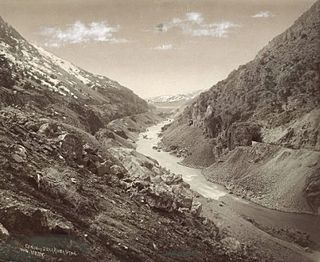| Eggnog, Utah | |
|---|---|
| Unincorporated community | |
| Coordinates: 37°46′21″N110°50′44″W / 37.77250°N 110.84556°W Coordinates: 37°46′21″N110°50′44″W / 37.77250°N 110.84556°W | |
| Country | United States |
| State | Utah |
| County | Garfield |
| Elevation | 4,445 ft (1,355 m) |
| Time zone | Mountain (MST) (UTC-7) |
| • Summer (DST) | MDT (UTC-6) |
| GNIS feature ID | 1437549 [1] |
Eggnog is an unincorporated community in Garfield County, Utah, United States.

In law, an unincorporated area is a region of land that is not governed by a local municipal corporation; similarly an unincorporated community is a settlement that is not governed by its own local municipal corporation, but rather is administered as part of larger administrative divisions, such as a township, parish, borough, county, city, canton, state, province or country. Occasionally, municipalities dissolve or disincorporate, which may happen if they become fiscally insolvent, and services become the responsibility of a higher administration. Widespread unincorporated communities and areas are a distinguishing feature of the United States and Canada. In most other countries of the world, there are either no unincorporated areas at all, or these are very rare; typically remote, outlying, sparsely populated or uninhabited areas.

Garfield County is a county in south central Utah, United States. As of the 2010 United States Census the population was 5,172, making it the fifth-least populous county in Utah. Its county seat and largest city is Panguitch.

Utah is a state in the western United States. It became the 45th state admitted to the U.S. on January 4, 1896. Utah is the 13th-largest by area, 31st-most-populous, and 10th-least-densely populated of the 50 United States. Utah has a population of more than 3 million according to the Census estimate for July 1, 2016. Urban development is mostly concentrated in two areas: the Wasatch Front in the north-central part of the state, which contains approximately 2.5 million people; and Washington County in Southern Utah, with over 160,000 residents. Utah is bordered by Colorado to the east, Wyoming to the northeast, Idaho to the north, Arizona to the south, and Nevada to the west. It also touches a corner of New Mexico in the southeast.
Eggnog was likely named for the egg nog served to stockmen at this place. [2]













